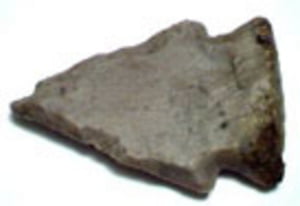You won’t likely get rich from stumbling across an arrowhead or two while hiking. On the other hand, if you come across a large collection in an estate sale or an abandoned storage unit or being witlessly sold at a yard sale, you could potentially bring home a few thousand dollars. And the “few” is utterly dependent on your own subjective definition. Here’s what to look for.
Size
Generally speaking, the bigger the point, the more valuable the arrowhead. The main reason for the difference in value is that arrowheads are made from brittle material and most don’t retain the original size. Arrowheads are highly subject to erosion both from natural causes and due to the explosion of populations. The value of arrowhead point size therefore has more to do with scarcity than aesthetics or anthropology. On the other hand, a particularly stylish arrowhead with a smaller point could well be worth substantially more than a plainly carved example with a bigger point.
Material
About that material. Arrowheads are carved from flint, quartzite, petrified wood, obsidian, quartz and even some copper. In other words, rocks. Think about other valuable rocks and what makes them so. Now apply what you know about those rocks to arrowheads. Like precious gems, the higher the quality of the raw material, the greater the value. You may get lucky and come across some arrowheads made of near-gemstone material. All things considered, once again, these arrowheads will be more valuable than boring old flint.
Symmetry
Arrowhead is not just an ancient object to be discovered, it is a description of a shape immediately identifiable. You hear the word arrowhead and you know exactly what someone means. Symmetry is what you want: a balance between each descending side from its point. Too much more material on one side or the other, whether the result of original carving or the result of the march of time and the arrowhead loses some value. A straight plane is from the center of the base to the tip of the point is more valuable than one that veers off to the left or right. You get the idea.
Condition
Keep in mind that everything is relative to being equal here. Condition is the ultimate determinant of value. An arrowhead with a point twice as long as another might be worth less because it is inferior in other respects. On the other hand, perfectly symmetrical high arrowheads made from near-gem quality material is definitely going to suffer if the tip of the point has broken off. Aim for the best condition in size, material and symmetry, but be prepared to sacrifice one for the others. Chances of finding a high quality arrowhead that has remained perfectly intact in the wilderness is a most difficult task, indeed. On the other hand, you might get lucky and chance across a very old collection that has been well maintained.



